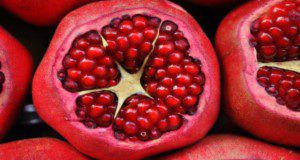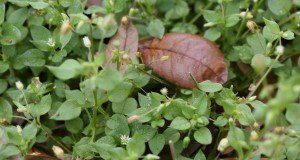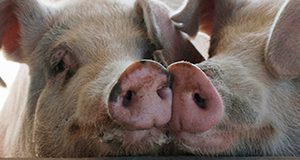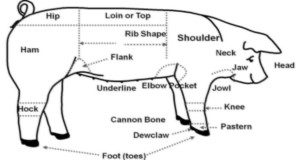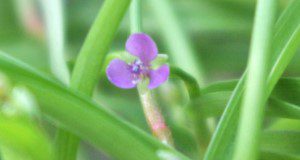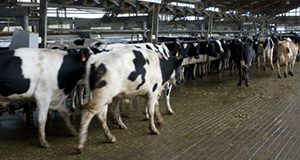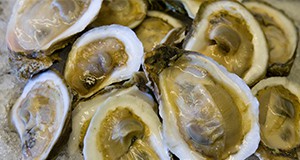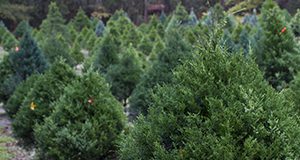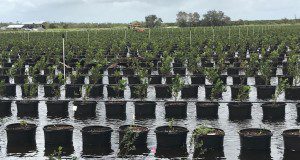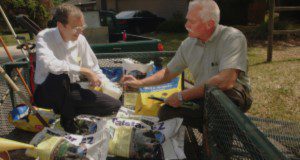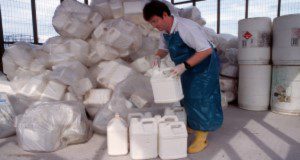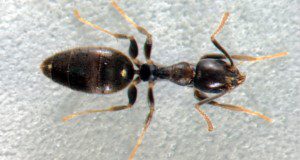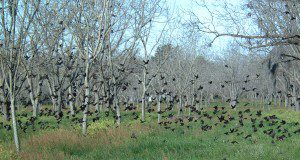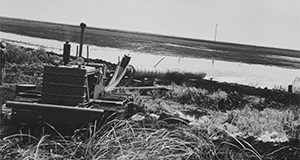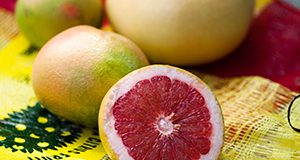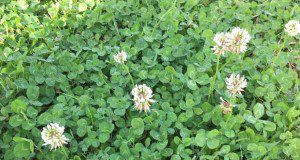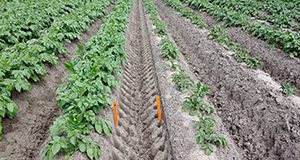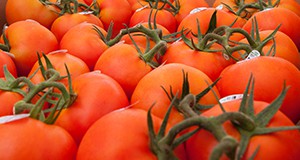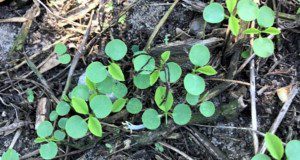Pomegranate production is becoming increasingly popular in the Southeast. Florida’s humid subtropical to tropical climate is favorable for not only pomegranate tree establishment, but also several diseases. This new 5-page publication of the UF/IFAS Plant Pathology Department, written by Katia V. Xavier, Achala N. KC, and Gary E. Vallad, describes the various diseases affecting pomegranate in Florida and provides some management recommendations.
https://edis.ifas.ufl.edu/pp349
Category: Agriculture
Biology and Management of Common Chickweed (Stellaria media) in Ornamental Crop Production
Chickweed is a common cool-season annual weed in Florida landscapes, container nurseries, home gardens, and other agricultural production systems. This new 5-page article is written for green industry professionals and others to aid in the identification and management of chickweed in and around ornamental plants. Written by Yuvraj Khamare, Chris Marble, Nathan Boyd, and Shawn Steed and published by the UF/IFAS Environmental Horticulture Department.
https://edis.ifas.ufl.edu/ep577
Common Hazards to Consider during Manufacturing of Feeds for Swine
This 8-page document discusses common biological, chemical, and physical hazards that may need preventive measures during the manufacture of swine feeds. Written by Taylor Langford, Morgan McKinney, Chad Carr, and Jason M. Scheffler, and published by the UF/IFAS Department of Animal Sciences, September 2019.
http://edis.ifas.ufl.edu/an357
Raising a Market Show Hog
One of the most rewarding and educational 4-H projects is raising, finishing, and showing a market hog. Many younger 4-H’ers excitedly wait until the day when they can choose their first show pig. Parents and youth need to understand that while the hog project is an excellent opportunity, it requires a great deal of thought, preparation, time, and resources. The purpose of this new 7-page publication is to help parents and youth understand some of the commitments and preparations involved in raising a hog, as well as what to expect and what to do in order to successfully complete the project. Written by Chris DeCubellis and published by the UF/IFAS 4-H Youth Development Program.
https://edis.ifas.ufl.edu/4h407
Biology and Management of Doveweed (Murdannia nudiflora) in Ornamental Crop Production
Doveweed is a common warm-season annual weed in Florida landscapes, container nurseries, and other agricultural production systems. This new 5-page article is written for green industry professionals and others to aid in the identification and management of doveweed in and around ornamental plants. Preemergence and postemergence herbicides are covered, as well as basic information on doveweed biology and growth. Written by Yuvraj Khamare, Chris Marble, Nathan Boyd, and Shawn Steed, and published by the UF/IFAS Environmental Horticulture Department.
https://edis.ifas.ufl.edu/ep576
Identificacion del Estres Termico en Vacas Lecheras
El estrés térmico ocurre cuando el calor producido por los procesos biológicos y el calor absorbido del ambiente excede la capacidad de la vaca para perder calor. This 2-page document is the Spanish version of AN356, Recognizing Heat Stress in Dairy Cows. Written by Izabella Toledo and Geoffrey Dahl, and published by the UF/IFAS Department of Animal Sciences, October 2019.
http://edis.ifas.ufl.edu/an358
Financial Risk in Off-Bottom Oyster Culture along Florida's West Coast
This 10-page fact sheet written by Russel Dame, Leslie N. Sturmer, Charles M. Adams, Richard Weldon, and Kelly A. Grogan and published by the UF/IFAS Food and Resource Economics Department explains how to assess the risks involved with off-bottom oyster culture, a method allowing for growing oysters in mesh containers above the sea bottom where they are protected from predation and from becoming buried in sediment.
http://edis.ifas.ufl.edu/fe1070
Elongate Hemlock Scale, an Exotic Scale Insect Pest of Christmas Trees and Other Conifers
Elongate hemlock scale, Fiorinia externa Ferris (Hemiptera: Diaspididae), is an armored scale insect native to Japan and eastern Asia. This insect was first documented in the United States in 1908 in Queens, NY, and has since spread throughout most of the eastern United States. Though the primary hosts of the pest, hemlocks and firs, do not occur in Florida, there are concerns that elongate hemlock scale coming into the region on cut Christmas trees may disperse and establish on conifers that do occur in Florida. Of specific interest are two endangered species, Florida torreya (Torreya taxiflora) and Florida yew (Taxus floridana), which are native to a small region in northwestern Florida. Also of concern are Florida forestry species, Florida Christmas tree species, and species used for ornamental plantings in Florida. What can Florida do to protect its native conifers and farmed trees from the elongate hemlock scale? Find out in this 5-page fact sheet written by Adam Dale, Travis Birdsell, and Jill Sidebottom and published by the UF/IFAS Entomology and Nematology Department.
http://edis.ifas.ufl.edu/in1253
Impacts of Hurricane Damage on Southern Highbush Blueberries
Florida has been affected by eight hurricanes since 2000. This new 3-page publication discusses the types of hurricane damage that occur in blueberry production operations, the impacts of these damages, and some recommendations on best management practices in the aftermath of a storm. Written by Douglas A. Phillips, Jeffrey G. Williamson, and Philip F. Harmon and published by the UF/IFAS Horticultural Sciences Department.
https://edis.ifas.ufl.edu/hs1342
Restricted Use Pesticides for Use in Florida
All pesticides are classified according to their toxicity, use pattern, and environmental effects. The two main classifications are unclassified use and restricted use, though unclassified pesticides are commonly referred to as general use pesticides. A restricted use pesticide is one that is for retail sale to and use by only certified applicators or persons under their direct supervision and only for those purposes covered by the applicator’s certification. This document will provide a listing of pesticide active ingredients registered in Florida that are classified as restricted and the reason(s) for the restricted use classification. This 4-page major revision was written by Frederick M. Fishel and published by the UF/IFAS Pesticide Information Office.
https://edis.ifas.ufl.edu/pi073
Worker Protection Standard: Records of Employee Safety Training
The EPA’s Worker Protection Standard for Agricultural Pesticides (WPS) covers pesticides used in the outdoor and enclosed-space production of plants on farms, forests, and nurseries, as well as greenhouses. The WPS requires agricultural employers to take steps to reduce pesticide-related risks when agricultural workers and pesticide handlers are exposed to these pesticides. The EPA has made several changes to the WPS since it was fully implemented in 1995, and this new 3-page document addresses maintaining records of worker and handler training under the revised WPS, including a sample employee-training verification. Written by Frederick M. Fishel and published by the UF/IFAS Pesticide Information Office.
https://edis.ifas.ufl.edu/pi283
Toxicity of Common Indoor Household Insecticides Registered in Florida
Insecticides are designed to control insect pests, but they can also be toxic (poisonous) to desirable plants and animals, including humans. Some pesticides are so highly toxic that very small quantities can kill a person, and almost any pesticide can make people ill if they are exposed to a sufficient amount. Because even safe pesticides, such as those intended for household use, can irritate the skin, eyes, nose, or mouth, it is a good idea to understand how pesticides can be toxic so you can follow practices designed to reduce or eliminate your exposure to them. This new 3-page document addresses the acute toxicity of common indoor household insecticide active ingredients registered in Florida and provides a table with mammalian toxicity values for each of these insecticides. Written by Frederick M. Fishel and published by the UF/IFAS Pesticide Information office.
https://edis.ifas.ufl.edu/pi282
Avicides
By and large, birds are beneficial because they provide enjoyment and recreation to humans and are vital to ecosystem balance. However, occasionally some species can compete with human interests. When these situations occur, some forms of control may become necessary. Avicides are pesticides designed to kill or repel pest birds. This new 2-page document addresses those avicides currently registered for use in Florida. Written by Frederick M. Fishel and published by the UF/IFAS Pesticide Information Office.
https://edis.ifas.ufl.edu/pi281
Rice Physiology, Products, and Critical Steps Associated with Postharvest Operations in Southern Florida
This 5-page document pertains to the UF/IFAS Extension programs related to rice production in the EAA and focuses on the steps that comprise postharvest processing of rice (drying, tempering, milling, and storage). It aims to highlight the physiology of the rice kernel and define some of the common terms used in the rice industry, elaborate on the steps in postharvest processing, and provide a brief overview of rice products and their market potential. Written by Jehangir H. Bhadha, Sangeeta Mukhopadhyay, Charlene Andrews, and Matthew VanWeelden, and published by the UF/IFAS Agronomy Department, September 2019.
http://edis.ifas.ufl.edu/ag438
Using Nucs in Beekeeping Operations
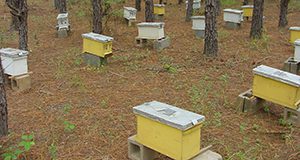
This 9-page illustrated fact sheet by James D. Ellis discusses the merits of using nucleus colonies, or nucs, which are smaller versions of full-sized Langstroth hives. The publication explains how to create and manage nucs and how to use them to control swarming, strengthen production colonies, re-queen hives, hive swarms, produce queens to sell to other beekeepers, and in general strengthen and expand a beekeeping operation. Published by the UF Department of Entomology and Nematology.
http://edis.ifas.ufl.edu/in869
Cost of Production for Fresh Market Grapefruit Grown in Indian River, 2017/18
This 4-page fact sheet written by Ariel Singerman and published by the UF/IFAS Food and Resource Economics Department presents the cost of production per acre for growing fresh grapefruit in the Indian River region during 2017/18. The methodology chosen to collect the data consisted of surveying growers directly to closely reflect growers' costs in the era of citrus greening. Typical users of the estimates in the fact sheet include growers and consultants, who use them as a benchmark; property appraisers, who use them to compute the taxes for property owners; and researchers, who use the estimates to evaluate the economic feasibility of potential new technologies.
http://edis.ifas.ufl.edu/fe1066
Weeds as Reservoirs of Plant Pathogens Affecting Economically Important Crops
Weeds are a major contributor to yield loss and reduction in yield quality in an agricultural setting, competing with the crop for resources like light, water, and nutrients. This competition, along with the cost of weed management strategies like tillage and herbicides, is responsible for the economic impact of weeds, which can reach into the billions. Weeds can also harm crop plants by acting as reservoirs for destructive plant pathogens, the insect vectors that move these pathogens from plant to plant, or both. This new 7-page publication of the UF/IFAS Horticultural Sciences Department, written by Morgan Byron, Danielle Treadwell, and Peter Dittmar, summarizes previously published weed-pathogen associations to help growers scout and monitor pathogens in weeds near production areas.
https://edis.ifas.ufl.edu/hs1335
Nematode Management in Potatoes (Irish or White)
Plant-parasitic nematodes are a major pest on potatoes in Florida. Root-knot, sting, and stubby-root nematodes are the primary problems. Sampling is an important component of confirming nematode problems in a field. Nematode management relies heavily on chemical control (nematicides), but crop rotation and soil culture are important considerations as well. This 12-page fact sheet about nematode management in potatoes was written by Zane J. Grabau and J.W. Noling and published by the UF Department of Entomology and Nematology.
http://edis.ifas.ufl.edu/ng029
Nematode Resistance: A Useful Tool for Root-Knot Nematode (RKN) Management in Tomato
Tomatoes are a major commodity in Florida, with an estimated production value of $453 million. Among the many pests and diseases that affect tomatoes, nematodes are one of the major problems. Since the ban on methyl bromide, these ubiquitous soil pests have become much more difficult to manage. This 5-page fact sheet written by Homan Regmi and Johan Desaeger and published by the UF/IFAS Entomology and Nematology Department discusses the use of nematode-resistant tomato cultivars as a tool to help manage root-knot nematodes in Florida.
http://edis.ifas.ufl.edu/in1250
Identification and Management of Clustered Pellitory (Parietaria praetermissa) in Citrus Groves
In Florida, clustered pellitory is becoming a troublesome weed for citrus, especially from the winter through early summer. Inadequate management of this weed can result in its heavy infestation in tree rows and can interrupt the spray pattern of low-volume drip irrigation systems. This new 3-page publication of the UF/IFAS Horticultural Sciences Department will assist Florida citrus growers with proper identification of clustered pellitory and with adoption of adequate and timely strategies to manage this weed in their groves. Written by Ramdas Kanissery, Biwek Gairhe, Brent Sellers, and Steve Futch.
https://edis.ifas.ufl.edu/hs1341
